The men and women's 3.5 and 3.0 draws are full. Be advised that if you have signed up on the wait list if someone drops out the first person on the list will automatically be moved into the draw and sent an email advising them that they have been officially entered into the Round Robin. We encourage everyone on the wait lists to come to the SSRR in case there are any last minute no shows, or subs needed for something unexpected.
Aiken Pickleball News
Did you know that when you sign up for a court reservation you do not need to type in all the names? You can do a simple copy and paste. Type the names out in another document, and do copy. Then go to the sign up and place your cursor in the box for the names - hit paste. Not only easier, but way faster!
Below is a copy of an obituary from the Wall Street Journal for Barney McCallum (1926-2019), who just passed away at the age of 93. He is being credited for refining the game of pickleball. It also provides a different version on how the game got its name.
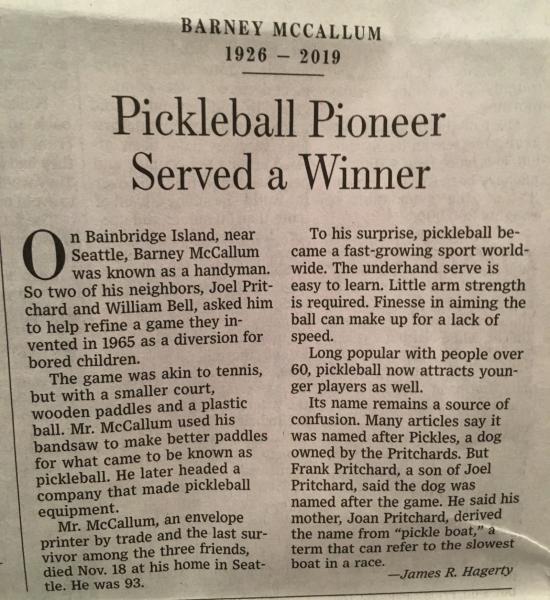
For those of you that love the competition, after our Super Senior Round Robin on January 18, 2020, there are seventeen (17) tournaments in our tri-state area scheduled between Valentines day and the July 4th weekend. The closest one is the Drive, Drop and Dink in August, March 27-29. In South Carolina there are tournaments scheduled in Bluffton/Hilton Head (3),Camden and North Myrtle Beach. Nothing yet in Orangeburg.
In Georgia, besides the one in Augusta, between now and July 4th weekend, there are tournaments scheduled in Atlanta (2), Griffin (2), Hartwell, Rome, Suwanee, and Tiger, Georgia. Near Charlotte, North Carolina, Concord and Salisbury have tournaments scheduled during this same time frame. A link to all of the above is provided on our Tournament webpage.
And if you are really serious about tournament play, go to http://www.pickleballtournaments.com/ for a list of all the tournaments scheduled nationwide.
To prevent injury and to avoid hindrance to play on another court, shout “Pickle” if a ball from your court goes into another court. Please do not go on to the other court to retrieve your ball. Also, please do not simply hit a ball back that rolls onto your court from another court; pick it up and return it to a player on the court it came from, when that player knows you are returning it.
The raffle for the certificates from Houndslake was held this afternoon at Odell Weeks. The first night at the Houndslake Inn was won by Pat Smith. The round of golf for four players was won by Nancy Rogers. The second night at the Houndslake Inn was won by Jean Durkee. Like to thank all of you that have volunteered thoughout the year. This program only works with your help.
Thanks again, and congratulations to Pat, Nancy and Jean.
Thanks to all the players who came out to participate in the Super Senior Round Robin on Saturday. All divisions had fun, competitive play. And thanks as always to the volunteers without whom none of our events would be possible.
And the medals go to . . .
WOMEN’S 3.5 -
GOLD - HARTNETT, Dotty
SILVER - VOSS, Diane
BRONZE - DELLAMORA, Barbara
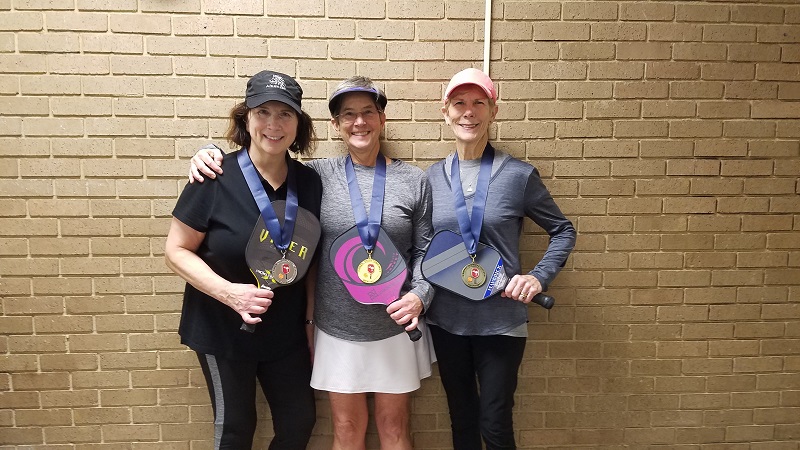
WOMEN’S 3.0
GOLD - STROUT, Linda
SILVER - KITCHINGS, Monty
BRONZE - FAULCONER, Susie
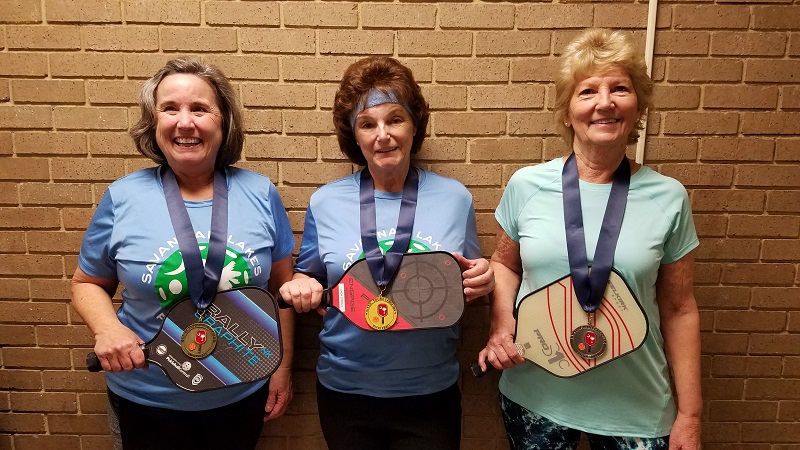
WOMEN’S 2.5
GOLD - TYLER, Barbara
SILVER - RICHARDS, Beverly
BRONZE - KLUDUWEIT, Karalee
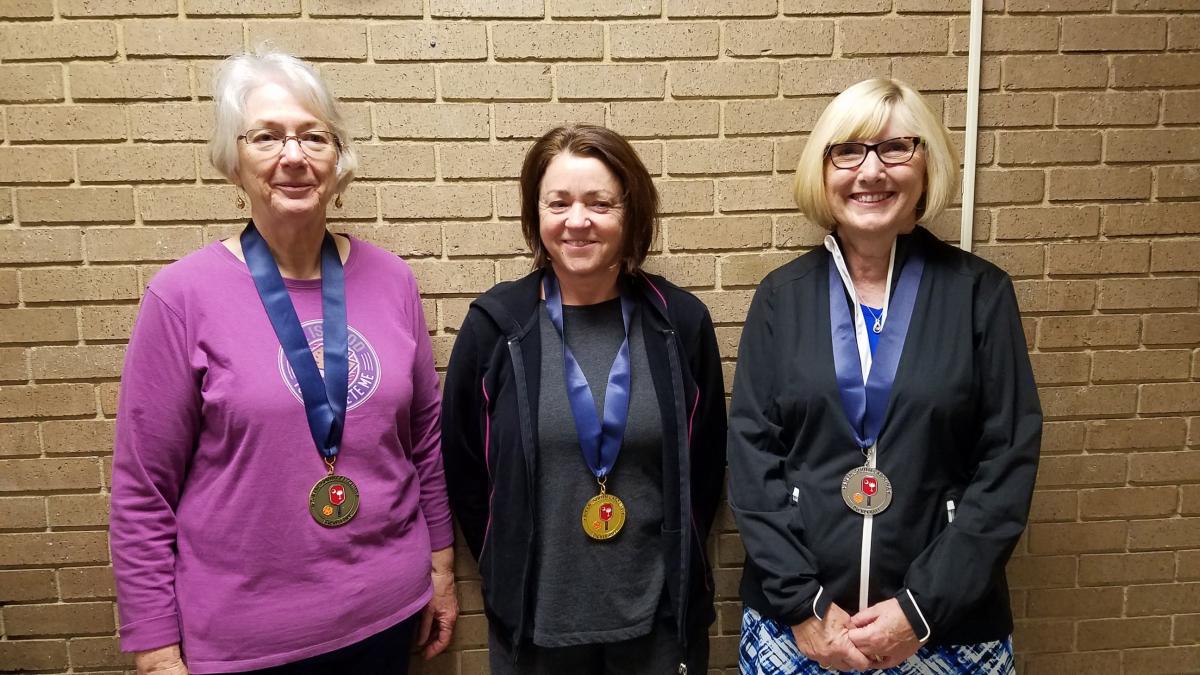
MEN’S 3.5
GOLD - BROMLEY, Rob
SILVER - HOEL, David
BRONZE - HOWARD, Michael
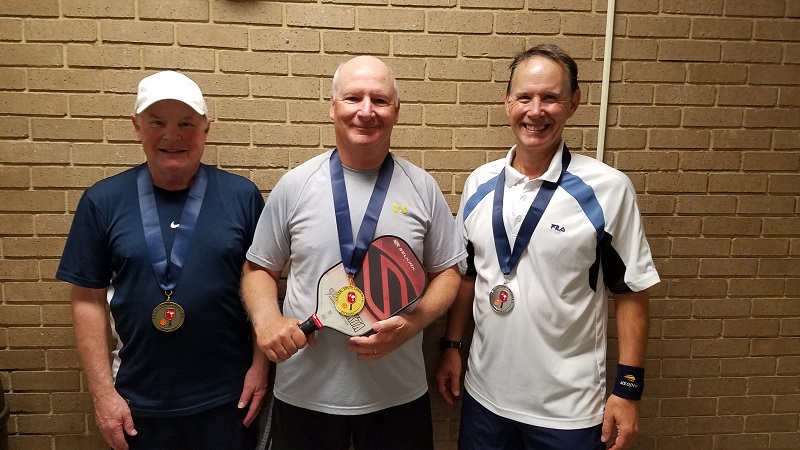
MEN’S 3.0
GOLD - LEWIS, Charles
SILVER - SCHNITZER, Steve
BRONZE - HUTSON, Mike
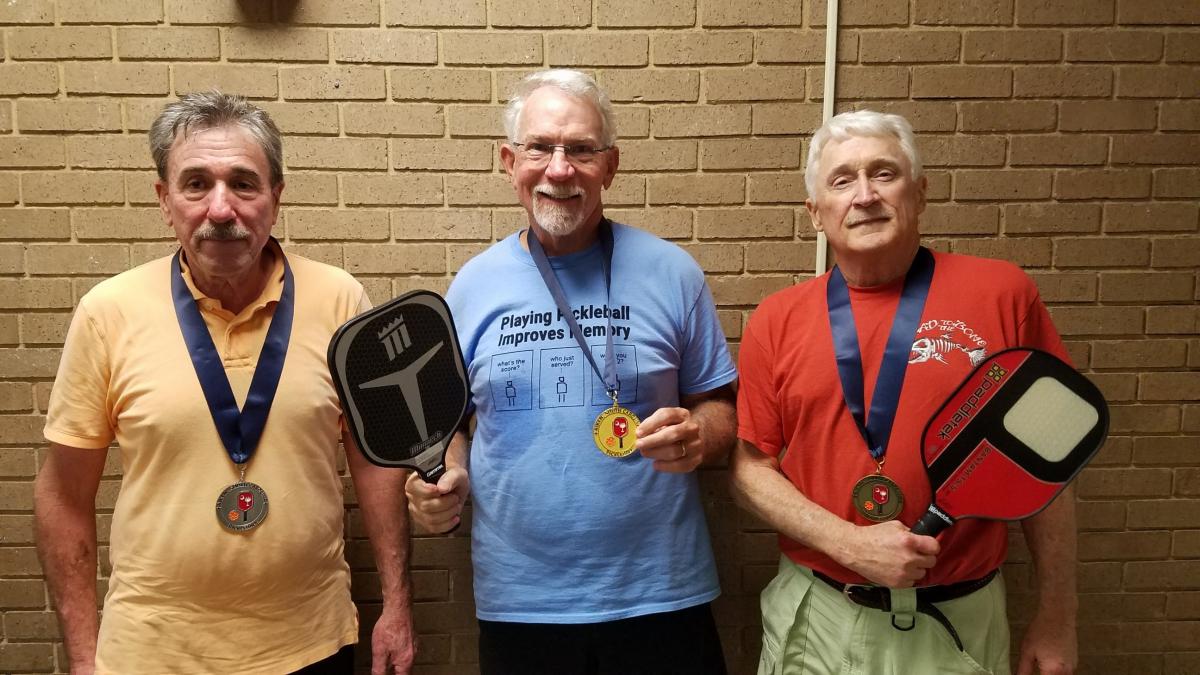
MEN’S 2.5
GOLD - PARKER, Jim
SILVER - STEPHENS, Ben
BRONZE - DOTO, Fran
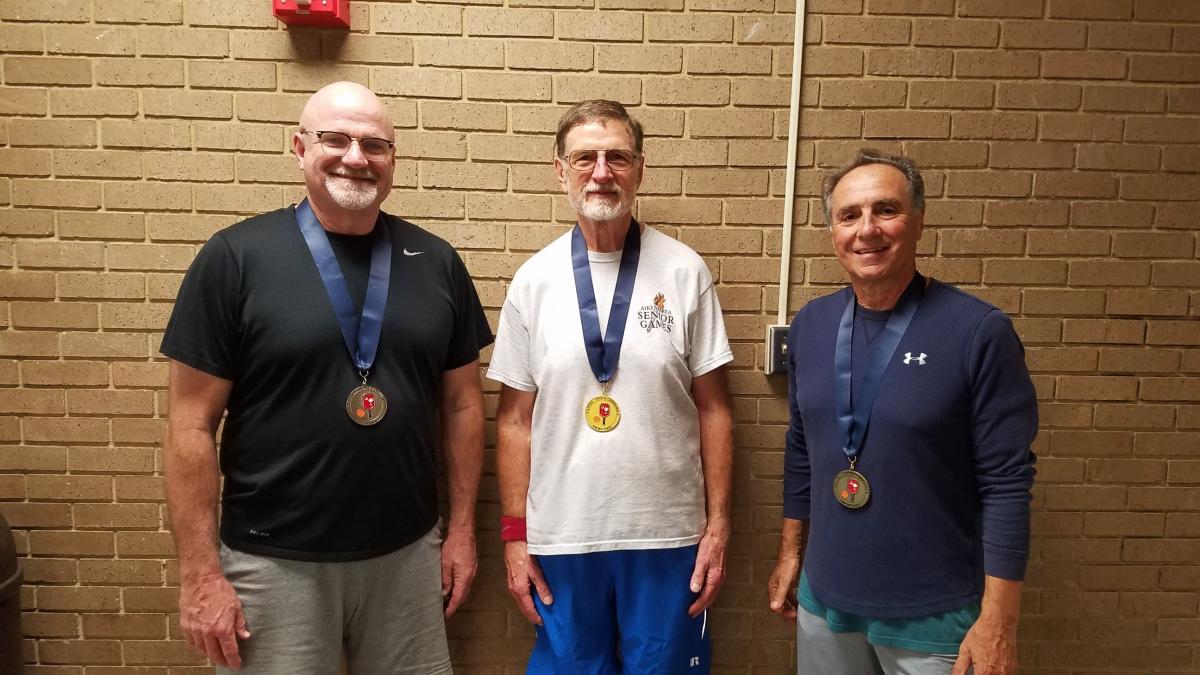
by Anne Rheins
We ran into a conflict with the dates posted earlier for our annual tournament at the Wilson Family Y. The confirmed dates for our 2020 event are: March 27, 28, 29. This will be a three-day event with traditional tournament brackets PLUS some fun extras!
Mark your calendar now! Registration will begin early next year.
I am super excited about this expanded event.
Get ready, Aiken!!!
Do to lack of interest, all play at 1st Presbyterian Church has been cancelled until further notice.
If and when we lose Gregg Park on Saturday mornings, drop-in play on Saturdays at 1st Pres, sign-up only, might return.
Smith-Hazel Recreation Center will offer three courts for pickleball from 1:00 - 3:00 pm on Monday, November 25th and Wednesday, November 27th. Dates and times for December will be posted on the Aiken Pickleball calendar when they become available. There will be one court for beginners, one for intermediate players, and one for advanced players.
Smith-Hazel is a City of Aiken Recreation Center. The card you use to access Odell Weeks will also work there.
Smith-Hazel is located at 400 Kershaw St NE in downtown Aiken.
